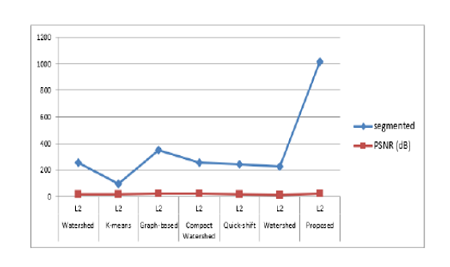


Indian Journal of Science and Technology
DOI: 10.17485/IJST/v15i17.2203
Year: 2022, Volume: 15, Issue: 17, Pages: 778-789
Original Article
Swaroopa H Narayan1*, Basavaraj N Jagadale1, Omar Abdullah Murshed Farhan Alnaggar1
1Department of PG Studies and Research in Electronics, Kuvempu University, Shankaraghatta, Shimoga, 577451, Karnataka, India
*Corresponding Author
Email: [email protected]
Received Date:26 November 2021, Accepted Date:24 March 2022, Published Date:10 May 2022
Objectives: In the last decade, artificial intelligence (AI) and machine learning (ML) have a significant impact on image analysis and segmentation. The most demanding aspect in digital image processing is efficient segmentation to extract the desired features or recognize the hidden patterns of the digital images, which are one of the major challenges. Even in existing segmentation techniques, due to under segmentation issues, particularly in remote or arial image analysis, necessary object features and residual details are not properly segmented. Therefore, the study presents a new method for image segmentation using machine learning, which addresses these limitations. Methods: This article presents a novel approach for arial image denoising and segmentation using unsupervised learning. The Discrete Wavelet Transform (DWT) is primarily used as a pre-processing tool, while edge details of the decomposed image are automatically preserved with the help of machine understanding. The use of a fast Non-Local (NL)-means filter provides a better visual effect for low-frequency image features, and the filtered image is partitioned into the number of clusters by Minimum- Spanning Tree (MST) clustering algorithm. Further, Statistical Region Merging (SRM) is used to eliminate the unwanted regions of the clustered image to give meaningful image details. Finally, the segmented image is projected at the wavelet restoration level. Here, the standard images are extracted from the SIPI database, and the system does not require training prototypes but works in an ”unsupervised” way. Findings: The proposed system segment 1014 regions in the first phase and the segmented image features efficiently recognize the hidden patterns of the arial image (7.1.06). However, to track the required object features, statistical Region Merging (SRM) is utilized, a drastic variation in the merging process eliminates the annoying details and brings effective outcomes, which involves 29 essential features with retained residual details at level-2 decomposition and is compared with leading segmentation techniques. The denoising performance of the suggested study provides a 21.73 Peak Signal to Noise Ratio (PSNR) value in 17.96 elapsed time. simulation results have proven to produce better segmentation and denoising with less iteration time. A qualitative evaluation through visual examination justifies the proposed study and is superior to some of the popular methods. Novelty/Applications: The utilization of wavelet transform to preserve edge features during segmentation is one of the key features of this method, and it significantly overcomes the under segmentation patterns. The combination of minimum-spanning tree clustering (MST) and statistical region merging (SRM) is the major strategic step in segmenting and detecting the essential object features of arial images.
Keywords: DWT; Fast NLmeans filter; Wavelet denoising; MST; SRM
© 2022 Narayan et al. This is an open-access article distributed under the terms of the Creative Commons Attribution License, which permits unrestricted use, distribution, and reproduction in any medium, provided the original author and source are credited.
Published By Indian Society for Education and Environment (iSee)
Subscribe now for latest articles and news.